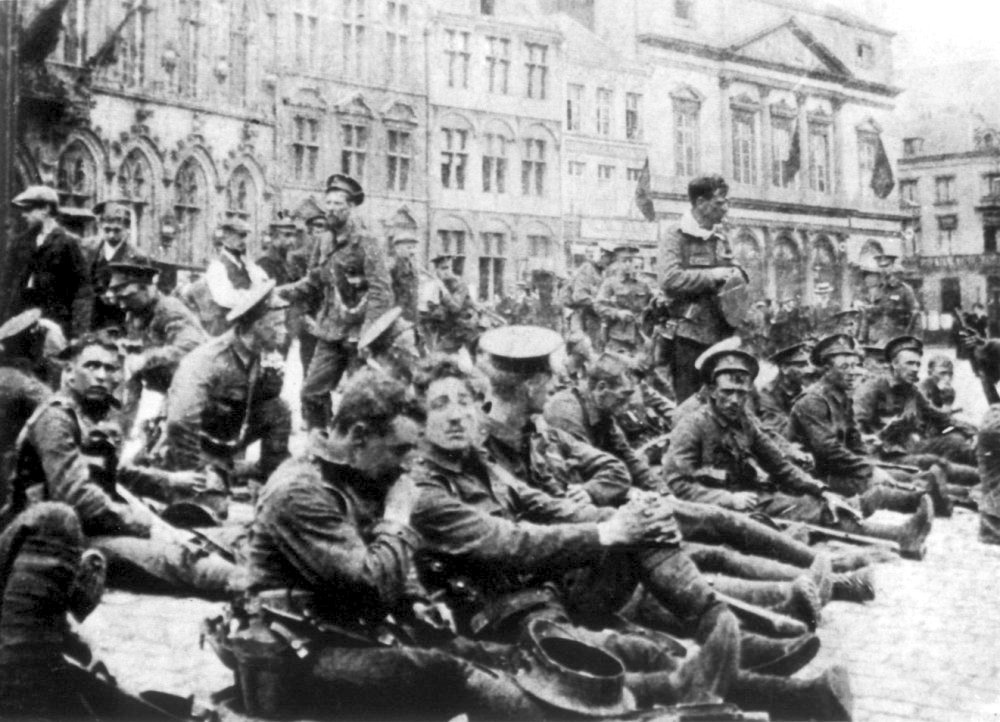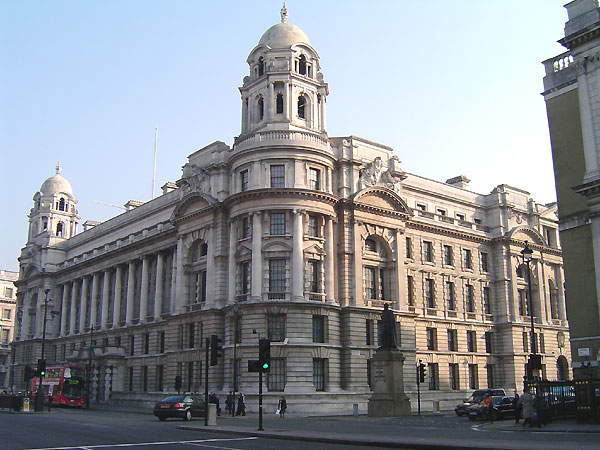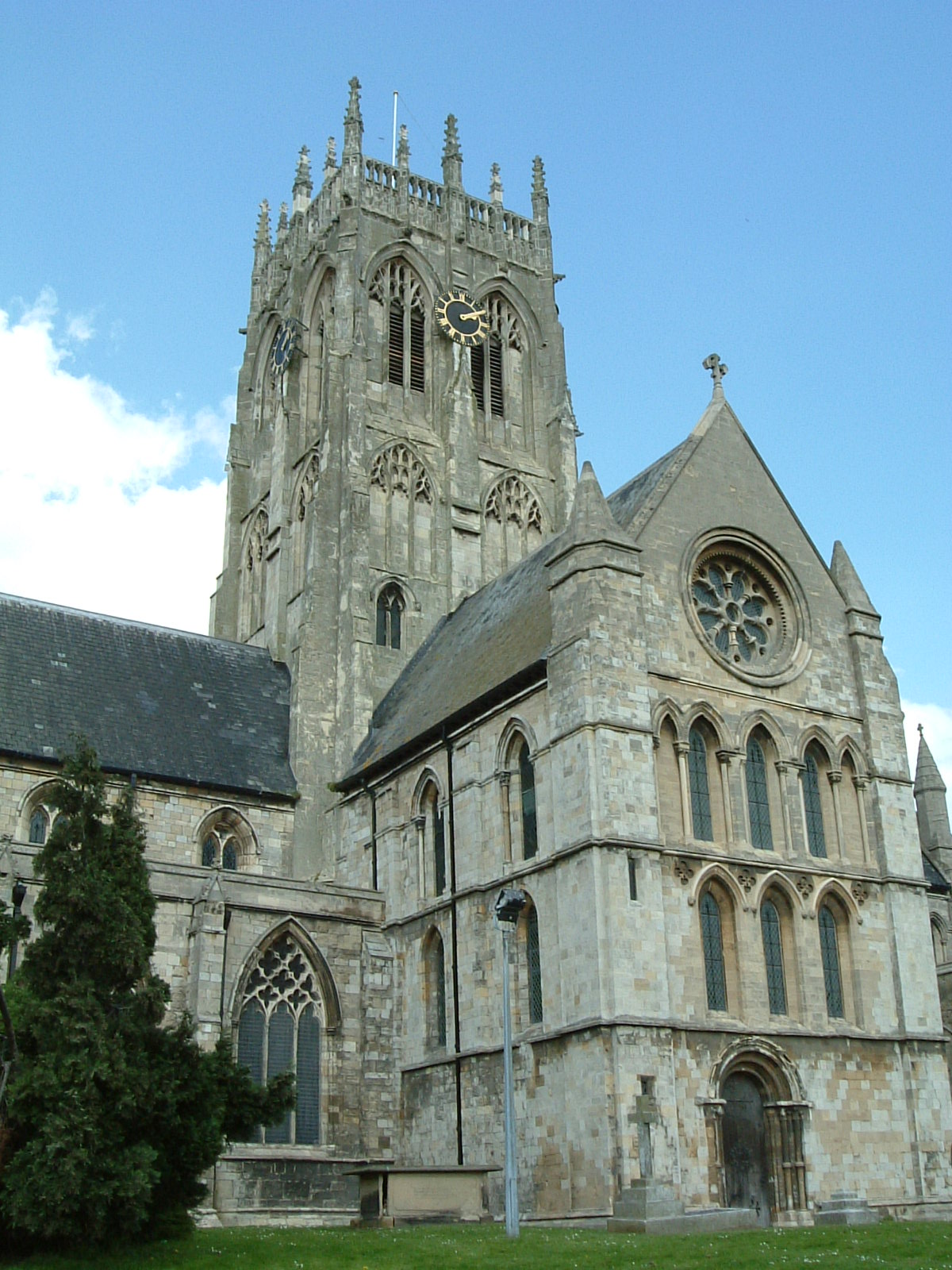|
West Riding Heavy Battery, Royal Garrison Artillery
The West Riding Heavy Battery, Royal Garrison Artillery was a part-time unit of Britain's Territorial Force formed in 1908 in the West Riding of Yorkshire. It fought on the Western Front during World War I, and served on in the Territorial Army until the eve of World War II. Origin ::''See main article 1st East Riding Artillery Volunteers'' When the Territorial Force (TF) was created in 1908 by the Haldane Reforms, each infantry division was allocated a heavy battery of the Royal Garrison Artillery (RGA). The West Riding Division was provided with the West Riding battery, based at York. This unit had originally been formed on 9 February 1861 as the 3rd Yorkshire (West Riding) Artillery Volunteer Corps but for almost 50 years it had been brigaded as part of the 1st East Riding Artillery Volunteers, later the 1st East Riding RGA (Volunteers).Litchfield & Westlake, pp. 176–86.''Army List'', various dates. In 1908–10, while the East and North Riding batteries of the 1st E ... [...More Info...] [...Related Items...] OR: [Wikipedia] [Google] [Baidu] |
Flag Of The British Army
A flag is a piece of fabric (most often rectangular or quadrilateral) with a distinctive design and colours. It is used as a symbol, a signalling device, or for decoration. The term ''flag'' is also used to refer to the graphic design employed, and flags have evolved into a general tool for rudimentary signalling and identification, especially in environments where communication is challenging (such as the maritime environment, where semaphore is used). Many flags fall into groups of similar designs called flag families. The study of flags is known as " vexillology" from the Latin , meaning "flag" or " banner". National flags are patriotic symbols with widely varied interpretations that often include strong military associations because of their original and ongoing use for that purpose. Flags are also used in messaging, advertising, or for decorative purposes. Some military units are called "flags" after their use of flags. A ''flag'' (Arabic: ) is equivalent to ... [...More Info...] [...Related Items...] OR: [Wikipedia] [Google] [Baidu] |
QF 4
QF may stand for: * Qantas, an airline of Australia (IATA code QF) * Qatar Foundation, a private, chartered, non-profit organization in the state of Qatar * Quality factor, in physics and engineering, a measure of the "quality" of a resonant system * Quick-firing gun A quick-firing or rapid-firing gun is an artillery piece, typically a gun or howitzer, which has several characteristics which taken together mean the weapon can fire at a fast rate. Quick-firing was introduced worldwide in the 1880s and 1890s an ..., a sort of artillery piece * Quiverfull, a movement of Christians who eschew all forms of birth control * A gun breech that uses metallic cartridges (see British ordnance terms#QF) * Quds Force an expeditionary warfare unit of IRGC {{disambig fr:QF ... [...More Info...] [...Related Items...] OR: [Wikipedia] [Google] [Baidu] |
Battle Of Aubers Ridge
The Battle of Aubers (Battle of Aubers Ridge) was a British offensive on the Western Front on 9 May 1915 during the First World War. The battle was part of the British contribution to the Second Battle of Artois, a Franco-British offensive intended to exploit the German diversion of troops to the Eastern Front. The French Tenth Army was to attack the German 6th Army north of Arras and capture Vimy Ridge, preparatory to an advance on Cambrai and Douai. The British First Army, on the left (northern) flank of the Tenth Army, was to attack on the same day and widen the gap in the German defences expected to be made by the Tenth Army and to fix German troops north of La Bassée Canal. The attack was an unmitigated disaster on the part of the British. No ground was gained, no tactical advantage was gained, and they suffered more than ten times the number of casualties as the Germans. To make matters worse the battle precipitated a political crisis back home, which became the Sh ... [...More Info...] [...Related Items...] OR: [Wikipedia] [Google] [Baidu] |
Second Battle Of Artois
The Second Battle of Artois (french: Deuxième bataille de l'Artois, german: Lorettoschlacht) from 9 May to 18 June 1915, took place on the Western Front during the First World War. A German-held salient from Reims to Amiens had been formed in 1914 which menaced communications between Paris and the unoccupied parts of northern France. A reciprocal French advance eastwards in Artois could cut the rail lines supplying the German armies between Arras and Reims. French operations in Artois, Champagne and Alsace from November–December 1914, led General Joseph Joffre, Generalissimo ( Commander in Chief) and head of Grand Quartier Général (GQG), to continue the offensive in Champagne against the German southern rail supply route and to plan an offensive in Artois against the lines from Germany supplying the German armies in the north. Field Marshal Sir John French, commander of the British Expeditionary Force (BEF), co-operated with the French strategy to capture Vimy Ridge by p ... [...More Info...] [...Related Items...] OR: [Wikipedia] [Google] [Baidu] |
Counter-battery Fire
Counter-battery fire (sometimes called counter-fire) is a battlefield tactic employed to defeat the enemy's indirect fire elements ( multiple rocket launchers, artillery and mortars), including their target acquisition, as well as their command and control components. Counter-battery arrangements and responsibilities vary between nations but involve target acquisition, planning and control, and counter-fire. Counter-battery fire rose to prominence in World War I. Counter-battery radar detects incoming indirect fire and calculates its point of origin. That location data can be sent by a communications link to friendly forces, who can then fire on the enemy positions, hopefully before they can reposition (the "scoot" part of shoot-and-scoot tactics). Counter-RAM systems track incoming rocket, artillery, and mortar fire and attempt to intercept and destroy the projectiles or provide early warning to the target area. Background Indirect fire was introduced so that artillery ... [...More Info...] [...Related Items...] OR: [Wikipedia] [Google] [Baidu] |
NLS Haig - Heavy Gun In Action
NLS may refer to: Computing * NLS (computer system) or oN-Line System, a pioneering computer system by Douglas Engelbart * National Language Support or Native Language Support, in software Organisations * National Language Services, South Africa * National Longitudinal Surveys, U.S. * National Lifeguard Service, Canada * National Life Stories, U.K. Business * Non-Linear Systems, electronics manufacturer * Nautilus, Inc., stock symbol NLS, fitness products manufacturer Education * North Leamington School, England * Nottingham Law School, a law school in Nottingham, England * National Law School of India University, Bangalore Libraries * National Library Service for the Blind and Print Disabled, U.S. mail circulation service * National Library of Scotland Science and technology * Nuclear localization signal, in biology * Nonlinear Schrödinger equation, in physics * Non-linear least squares, in statistics, a method used in regression analysis Spaceflight * Nanosatellite Launc ... [...More Info...] [...Related Items...] OR: [Wikipedia] [Google] [Baidu] |
Le Havre
Le Havre (, ; nrf, Lé Hâvre ) is a port city in the Seine-Maritime department in the Normandy region of northern France. It is situated on the right bank of the estuary of the river Seine on the Channel southwest of the Pays de Caux, very close to the Prime Meridian. Le Havre is the most populous commune of Upper Normandy, although the total population of the greater Le Havre conurbation is smaller than that of Rouen. After Reims, it is also the second largest subprefecture in France. The name ''Le Havre'' means "the harbour" or "the port". Its inhabitants are known as ''Havrais'' or ''Havraises''. The city and port were founded by King Francis I in 1517. Economic development in the Early modern period was hampered by religious wars, conflicts with the English, epidemics, and storms. It was from the end of the 18th century that Le Havre started growing and the port took off first with the slave trade then other international trade. After the 1944 bombings the firm ... [...More Info...] [...Related Items...] OR: [Wikipedia] [Google] [Baidu] |
British Expeditionary Force (World War I)
The British Expeditionary Force (BEF) was the six-divisions the British Army sent to the Western Front during the First World War. Planning for a British Expeditionary Force began with the 1906–1912 Haldane reforms of the British Army carried out by the Secretary of State for War Richard Haldane following the Second Boer War (1899–1902). The term ''British Expeditionary Force'' is often used to refer only to the forces present in France prior to the end of the First Battle of Ypres on 22 November 1914. By the end of 1914—after the battles of Mons, Le Cateau, the Aisne and Ypres—the existent BEF had been almost exhausted, although it helped stop the German advance.Chandler (2003), p. 211 An alternative endpoint of the BEF was 26 December 1914, when it was divided into the First and Second Armies (a Third, Fourth and Fifth being created later in the war). "British Expeditionary Force" remained the official name of the British armies in France and Flanders throug ... [...More Info...] [...Related Items...] OR: [Wikipedia] [Google] [Baidu] |
Central Force
In classical mechanics, a central force on an object is a force that is directed towards or away from a point called center of force. : \vec = \mathbf(\mathbf) = \left\vert F( \mathbf ) \right\vert \hat where \vec F is the force, F is a vector valued force function, ''F'' is a scalar valued force function, r is the position vector, , , r, , is its length, and \hat = \mathbf r / \, \mathbf r\, is the corresponding unit vector. Not all central force fields are conservative or spherically symmetric. However, a central force is conservative if and only if it is spherically symmetric or rotationally invariant. Properties Central forces that are conservative can always be expressed as the negative gradient of a potential energy:- : \mathbf(\mathbf) = - \mathbf V(\mathbf)\textV(\mathbf) = \int_^ F(r)\,\mathrmr (the upper bound of integration is arbitrary, as the potential is defined up to an additive constant). In a conservative field, the total mechanical energy ( kinetic an ... [...More Info...] [...Related Items...] OR: [Wikipedia] [Google] [Baidu] |
War Office
The War Office was a department of the British Government responsible for the administration of the British Army between 1857 and 1964, when its functions were transferred to the new Ministry of Defence (United Kingdom), Ministry of Defence (MoD). This article contains text from this source, which is available under th Open Government Licence v3.0 © Crown copyright It was equivalent to the Admiralty (United Kingdom), Admiralty, responsible for the Royal Navy (RN), and (much later) the Air Ministry, which oversaw the Royal Air Force (RAF). The name 'War Office' is also given to the former home of the department, located at the junction of Horse Guards Avenue and Whitehall in central London. The landmark building was sold on 1 March 2016 by HM Government for more than British pound, £350 million, on a 250 year lease for conversion into a luxury hotel and residential apartments. Prior to 1855, 'War Office' signified the office of the Secretary at War. In the 17th an ... [...More Info...] [...Related Items...] OR: [Wikipedia] [Google] [Baidu] |
Hedon
Hedon is a town and civil parish in Holderness in the East Riding of Yorkshire, England. It is situated approximately east of Hull city centre. It lies to the north of the A1033 road at the crossroads of the B1240 and B1362 roads. It is particularly noted for the parish church of St. Augustine, known as the 'King of Holderness', which is a Grade I listed building. In 1991, the town had a population of 6,066, which had risen to 6,332 by the time of the 2001 UK census. By the 2011 UK census, Hedon parish had a population of 7,100, History Hedon is not mentioned in the ''Domesday Book'' which leads to the belief that it was a new town created by the Normans as a port. Hedon was at its most prosperous in the 12th and 13th centuries and at one time was the 11th largest port in England. The decline of the port came with the development of the port of Hull and the building of larger ships which were unable to get up the small river to Hedon. Hedon was given its first charter ... [...More Info...] [...Related Items...] OR: [Wikipedia] [Google] [Baidu] |
Army Remount Service
The Army Remount Service was the body responsible for the purchase and training of horses and mules as remounts for the British Army between 1887 and 1942. Origins Prior to 1887, the purchase of horses was the responsibility of individual regimental colonels, in the case of cavalry regiments, or of agents acting on behalf of the artillery and engineers. This system worked well enough in peacetime but rapidly broke down during war when demand exceeded supply, prices rose and, the price that could be paid per horse being set by the Government, regimental purchasing officers and agents were frequently left with the most inferior animals. Consequently, in 1887 the Remount Department was set up in order to ensure the uniformity and suitability of the animals purchased for the army, and their training. Owners were encouraged to register a proportion of their horses with the Department, the Department having the option of purchasing these animals for a fixed sum in time of emergency ... [...More Info...] [...Related Items...] OR: [Wikipedia] [Google] [Baidu] |

.jpg)



